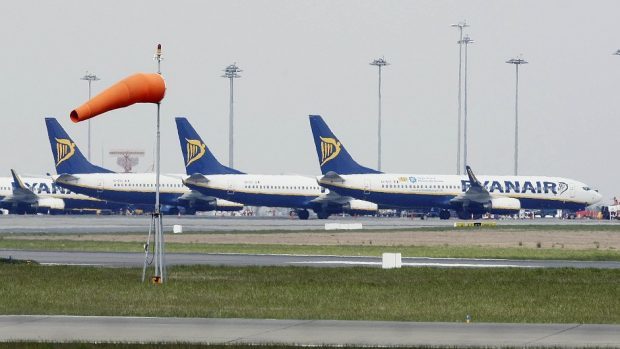Scrapping the air passenger duty (APD) would bring huge benefits to Scotland’s economy, Irish budget airline Ryanair said yesterday, citing new figures.
Passenger numbers at Ireland’s main airports went up by 3.3million to 29.8million in 2015 − and Ryanair said it was responsible for delivering 70% of that increase.
The airline said the improvement was largely thanks to the Irish Government’s abolition of air travel tax in April 2014, adding that the UK authorities should follow suit.
Scottish business and tourism bodies said they would welcome such a move.
Ryanair spokesman Robin Kiely said: “After five years of decline at Irish airports, the welcome repeal of the air travel tax has resulted in record traffic and tourism growth, demonstrating to our counterparts in the UK and Germany the enormous economic benefits removing APD brings.”
The Scottish Government earlier announced plans to use devolved powers to start cutting APD by 50% in April 2018 with a view to abolishing the charge altogether.
A spokesman for Transport Scotland yesterday described APD as the “most expensive tax of its kind in Europe” and a “barrier to Scotland’s ability to secure new direct air routes and maintain existing ones”.
He said reductions to APD would help “generate sustainable growth” for the Scottish economy.
According to a study commissioned earlier this year by Edinburgh Airport, a 50% drop in APD would create 3,800 jobs by 2020 and stimulate £200million of economic benefits each year.
VisitScotland welcomed plans to devolve APD in 2018 − as recommended by the Smith Commission − and said lowering the tax would be “wonderful” for tourism.
A spokeswoman for VisitScotland said: “Such a significant reduction in APD would act as a major boon for tourism in Scotland as it would enable and encourage many more visitors to come here to experience and enjoy all that our regions offer as fantastic visitor destinations.”
A combined total of 15.5 million people from overseas and from England, Scotland and Wales went on tourism trips in Scotland during the year ended June 2015, a 7% increase year-on-year, figures published by VisitScotland indicate.
Stewart Nicol, chief executive of Inverness Chamber of Commerce, said there is a “very strong case” for the total abolition of APD.
At present, flights departing from airports in the Highlands and islands, including the Inverness terminal, are exempt from APD, but those flying into the region are not.
Mr Nicol said: “In terms of APD, there is a very strong case for it being abolished and there have been a number of studies demonstrating that. It would be a significant, positive tax boost if that was to happen so I would certainly advocate the abolition of APD.”
